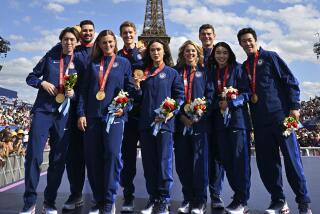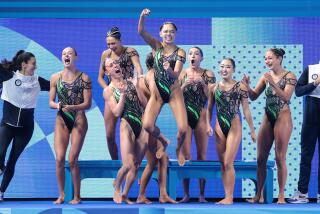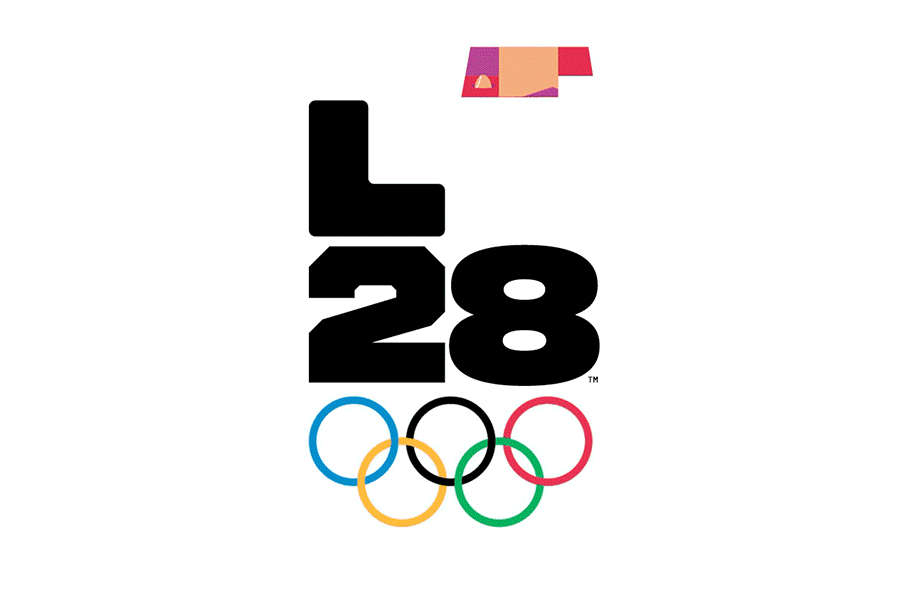U.S. male gymnasts are playing catch-up
SAN JOSE -- The U.S. gymnastics program, which has produced a steady stream of proficient pixies since Marta Karolyi became the women’s national team coordinator, fell on hard times on the men’s side after the 2004 Olympics.
Athens all-around gold medalist Paul Hamm, stung by cries he should give up his prize because a judging error shortchanged third-place finisher Yang Tae-young of South Korea, left the sport to bury himself in textbooks at Ohio State.
His twin, Morgan, also part of the silver medal-winning men’s team, followed him to school. The exodus grew when five-time U.S. champion Blaine Wilson, an inspirational leader at Athens, also stepped away from the elite level.
The U.S. men were shut out at the 2005 World Championships -- which didn’t have a team event -- and a young team finished 13th the following year. It took home only one individual medal in 2006, Alexander Artemev’s bronze on the pommel horse.
Less than two years before the Beijing Games, the men’s medal prospects appeared bleak.
Then, the comeback began.
The men finished fourth at the 2007 World Championships, and University of Oklahoma student Jonathan Horton took fourth in the all-around. When the Hamms decided to resume competing, the U.S. program took a dramatic upturn that advanced a notch this week at the Pacific Rim championships.
Paul Hamm, who led the U.S. men to the team title and won the all-around Friday, added titles on pommel horse (15.375) and parallel bars (15.825, shared with Wang Heng of China) to his haul Sunday at San Jose State’s Event Center. He was second on floor exercise, third on the horizontal bar and fifth on the still rings, a spot behind teammate Raj Bhavsar.
“Every competition before the Olympics is an opportunity to test myself,” Hamm said.
“This one is different from the events before, and they’re helping me get experience in the team environment and to get a feeling for the individual event finals, which are so different from team.
“I think I’m getting close to where I want to be.”
Artemev, trying a new move on the pommel horse, slipped off and finished fifth. He also fell off the parallel bars and horizontal bar and stumbled to a sixth-place finish on floor exercise.
Steve Penny, president of USA Gymnastics, wasn’t surprised Hamm came back to the gym -- or that Hamm won the Winter Cup and American Cup titles before prevailing here.
“I told him, ‘You’re making this look easy,’ and he said, ‘Trust me, it’s not,’ ” Penny said.
“He’s raising the bar for the rest of the team. He’s letting everybody know they’ve got to take this seriously. There’s a lot of work and commitment and dedication that goes along with this, and it’s helping everybody.”
It seems to be -- and more help is on the way. Morgan Hamm, recovering from surgery on a torn pectoral muscle, is expected to resume competing April 23, two months before the Olympic trials in Philadelphia.
“Coming back was hell. It took Morgan and I about eight months before we felt like gymnasts again,” Paul Hamm said.
“I didn’t start to really feel like a true gymnast until I competed at the Winter Cup this past February. Now I feel like I’m back in it, like I haven’t skipped a beat and all my natural abilities have come back, my competitiveness has come back, so I’m just happy that I didn’t lose those things with the time off.”
The women, who won the team title on Saturday, sustained their excellence Sunday.
All-around champion Nastia Liukin of Parker, Texas, fit and fearless after ankle surgery, won the balance beam with a stunning routine that earned 16.175 points. She fell on a release move on the uneven bars but was otherwise so sharp that she slipped only into a tie for second place with Canada’s Kristina Vaculik, behind Jana Bieger of Coconut Creek, Fla., who had 15.55 points.
Bieger, also competing on a surgically repaired ankle, added a bronze medal on the beam to her uneven bars title Sunday.
Darlene Hill of Mount Laurel, N.J., who made her first national team last year at 17, was the surprise floor exercise winner, using her dynamic tumbling to earn a 15.425 and praise from Karolyi.
“We knew she is a very good tumbler, but it looked like she couldn’t control herself,” Karolyi said. “This is really the first time she showed she can deliver at the right time the performance.”
By her final event, floor exercise, Liukin was tired and stumbled several times before finishing tied for fourth. Karolyi was forgiving, blaming a tough schedule in which the women competed on consecutive days.
“Nastia did a good job, excellent,” Karolyi said. “Jana Bieger, who is just coming back, she proved that she is definitely a contender for the Olympic team.”
Picking that team will be difficult. Although China and Russia didn’t send their top men or women to this event, it was a chance for the U.S. athletes to compete with 13 other nations and polish their skills before the U.S. trials.
“I like to think of this as a mini-Olympics,” Bhavsar said.
It also helped confirm Karolyi’s sense that the U.S. women are ready to come back strong individually and as a team.
“I think we are right on the top and we are competing from equal to equal with these big nations,” she said. “Who will hit a better day will be the winner.”
--
Helene Elliott can be reached at helene.elliott@latimes.com.
To read previous columns by Elliott, go to latimes.com/elliott.
More to Read
Go beyond the scoreboard
Get the latest on L.A.'s teams in the daily Sports Report newsletter.
You may occasionally receive promotional content from the Los Angeles Times.








